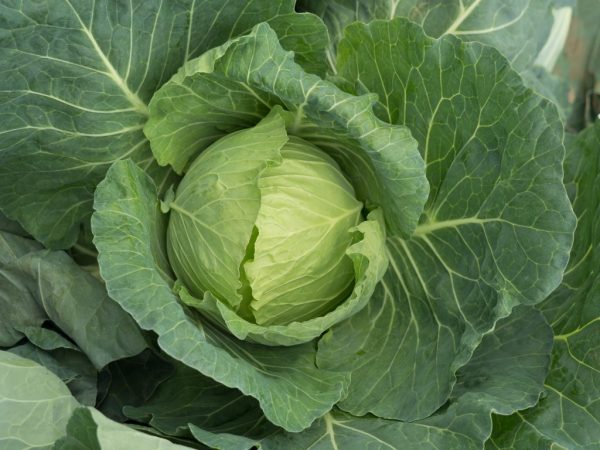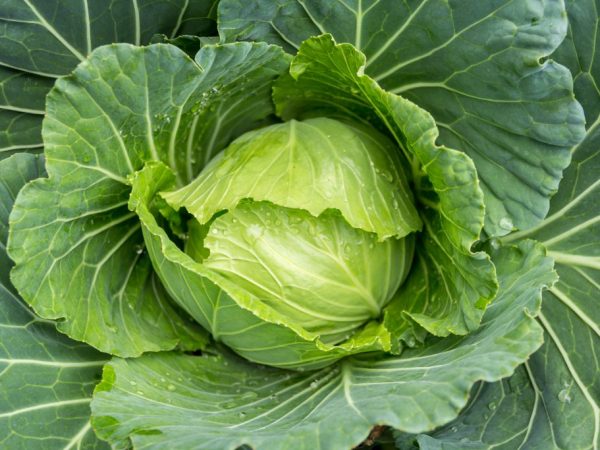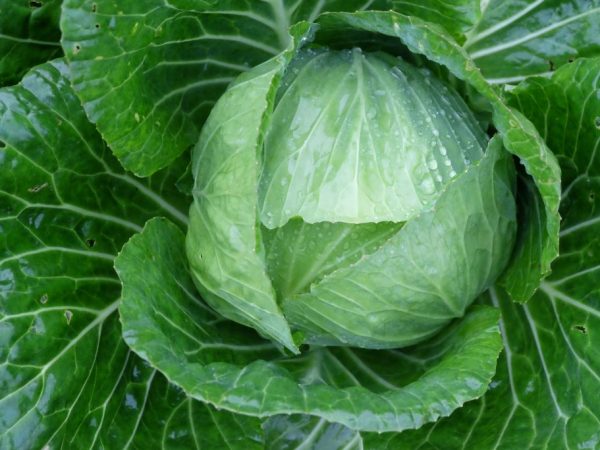Description of early varieties of white cabbage
The cultivation of cabbage requires adherence to agrotechnical requirements. The amount of harvest and the ripening period also depend on the selected cabbage variety. If the gardener wants to get a fresh vegetable in a short time, he needs to plant early varieties of white cabbage.

Description of early varieties of white cabbage
General characteristics of early varieties
Early varieties of white cabbage have a ripening period of 45 to 110 days. Such varieties are characterized by a loose structure of the head of cabbage. The foliage is tender and very juicy, and the middle is thick and hard. Almost all early crop varieties ripen in July.
Young cabbage is used to make healthy summer salads, but it will not work to pickle the vegetable for the winter, since it is very fragile, and the heads of cabbage quickly lose their attractive appearance.
There are few varieties of early white cabbage, and all of them are grown in central Russia.
June
The variety was invented exclusively for temperate climates. It has a pleasant taste, juicy foliage and a firm head of cabbage. The variety is suitable for salads and appetizers. Cabbage goes well with other crops. Vegetable weight - 2-3 kg.
The variety is suitable for consumption 60 days after planting. It can be grown both outdoors and in a greenhouse.
Kazachok
Another name for this type of cabbage is Kazachok F1. A white-headed vegetable is considered a hybrid, therefore, it has several advantages:
- disease and pest resistance;
- big harvest;
- does not crack.
The foliage is raised. The vegetable reaches a height of 30 cm, the diameter of the head is 18 cm. The shape is slightly oval. The color outside is greenish-gray, with a waxy sheen. Inside, the color is cream. The vegetable tastes crisp and very juicy. The ripening period is 110 days.
Vegetable weight - 1.2 kg. From 1 sq. m harvest up to 4 kg. The hybrid tolerates cold weather very well. Planting takes place in open ground in mid-May, since the harvest ripens at the same time, it can be quickly and at one time harvested. Cossack is intended only for fresh consumption.
Rinda F1
Rinda is a hybrid variety of early white cabbage. The cultivation is favorable in the southern regions of the country. Heads of cabbage have average parameters. The foliage is large and spreading. The color is light green.
The species is one of the earliest, stored for more than 3 months. To keep it for so long, favorable conditions are created for the vegetable:
- adhere to an air temperature of no more than 8 ° C;
- create relative humidity.
In areas where the climate is hot, Rindu is taken out 2 times a year. The seeds are planted immediately after the first harvest. The variety tolerates spring cold well.
Tobia F1
An early ripening hybrid called Tobia surprises with its high yield. It is suitable for those who grow crops for sale. It has large heads weighing 3.5 kg.

The Tobia variety will delight you with its yield
Tobia does not overripe, its middle does not crack, but the crispness remains. To the touch, the foliage is neat, even and shiny, green in color. The head of cabbage is dense, yellow in color.The hybrid is stored for no more than 2 months.
Express F1
Express is the earliest ripening white vegetable. After planting the seedlings in the soil, the crop is harvested after 40-45 days, the full growing season is 90 days.
Express produces a large harvest that has excellent taste. The vegetable heads are round, light green, weighing 1.3 kg. The culture can be stored for up to 4 months if the temperature in the storage is kept no more than 10 ° C.
Taurus F1
Taurus is called hybrid, its ripening period is 95-100 days. The vegetable is harvested in mid-July. The fruits of this variety are considered the largest: the weight of one head of cabbage reaches 5-6 kg.
The culture grows well in drought and has a strong immunity to major diseases.
Arctic F1
The Zapolyarye hybrid was created exclusively for cultivation in the cold regions of the country. It matures 45 days after planting on the site. The hybrid perfectly tolerates low temperatures, loves moisture and light. This is an important prerequisite for growing.
The foliage of the vegetable is neat, the diameter is only 50 cm. The heads of cabbage are small, their weight is 1-1.6 kg. They have a round appearance, are not prone to cracking.
Parel F1
A hybrid called Parel F1 was created by Dutch agronomists. Harvesting is possible 52 days after sowing the seeds. The heads of the vegetable are of medium size, dense, do not crack, and perfectly tolerate transportation over long distances. Fruit weight - 0.5 kg. The color is light green. The variety can be grown in greenhouses and outdoors.
Zantorino F1

Cabbage is delicious fresh
This species was bred by Dutch breeders. The crop is ready to be harvested 95-100 days after planting the seedlings on the site. The heads of the vegetable are ball-shaped, smooth to the touch.
The color is light green. The density is medium, the middle does not crack. Head weight - 1.7-2.1 kg.
Golden hectare
Golden hectare is a high-yielding variety (up to 7 kg per 1 sq. M). The head of cabbage has a green tint, weight 2.5 kg. The ripening period is 110 days. The variety tolerates drought well, but is affected by pests and diseases, so it is important to take preventive measures.
Heads of cabbage are dense. The shelf life is up to 5 months. The golden hectare is perfect for canning for the winter, practically does not crack. After ripening, it can lie on the site for a long time and not deteriorate.
Zolotovorotsky
The culture ripens 55 days after planting. The foliage is compact, the heads of cabbage are strong, round in shape. The weight of 1 cabbage is about 2 kg.
Green colour. The culture is ideal for making vitamin salads.
Dita
The culture is early, ready to be harvested 100 days after planting the seedlings. Cabbage heads grow on a high stalk, round shape.
Average weight - 1 kg. The shelf life is 2 months. The vegetable can be transported over long distances.
Dietmar early
The ripening period for the early variety is 65 days. The shape of the heads is round, smooth. Cabbage weight - 1.5-2 kg. The variety is prone to crackling, so it is necessary to cut off the fruits on time.
The culture is suitable for fresh consumption and for sale.
Transfer
The variety is hybrid, early maturing. The growing season is 100 days. The head is small, round. The density is medium and the weight is 0.5 kg. Positive aspects of the view:
- good harvest;
- high productivity;
- beautiful fruits;
- simultaneous maturation;
- resistance to cracking.
The hybrid can be planted on seedlings at home or in a greenhouse. Planting is carried out in March, and the picking of seedlings is carried out in April. The foliage is green with white. The inside is completely white. Intense taste and aroma. The variety has strong immunity. The vegetable can be eaten fresh and fermented.
Zarya
This variety is divided into 2 types: Zarya MC and hybrid Zarya F1. More positive qualities belong to the hybrid (F1). The heads are medium, weighing 2 kg. The aging period is 110 days. The foliage is green with a waxy sheen. The surface is smooth, glossy.
Cabbage is suitable for summer salads, soups and hodgepodge.Also, the vegetable is good for sourdough, pickling, but not suitable for winter preparations. It is stored for no more than 1 month. Fruiting actively, the fruits ripen at the same time. Since the heads of cabbage are not prone to cracking, they can be kept on the site for a couple of weeks after ripening.
Conclusion
There are more early varieties of cabbage. Early species are ready for harvest in early summer. It will not be possible to preserve the heads of cabbage for a long time - they are not harvested for the winter. The ultra-early varieties are suitable for making fresh salads, aromatic stews and soups.


